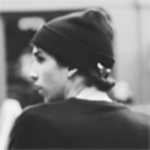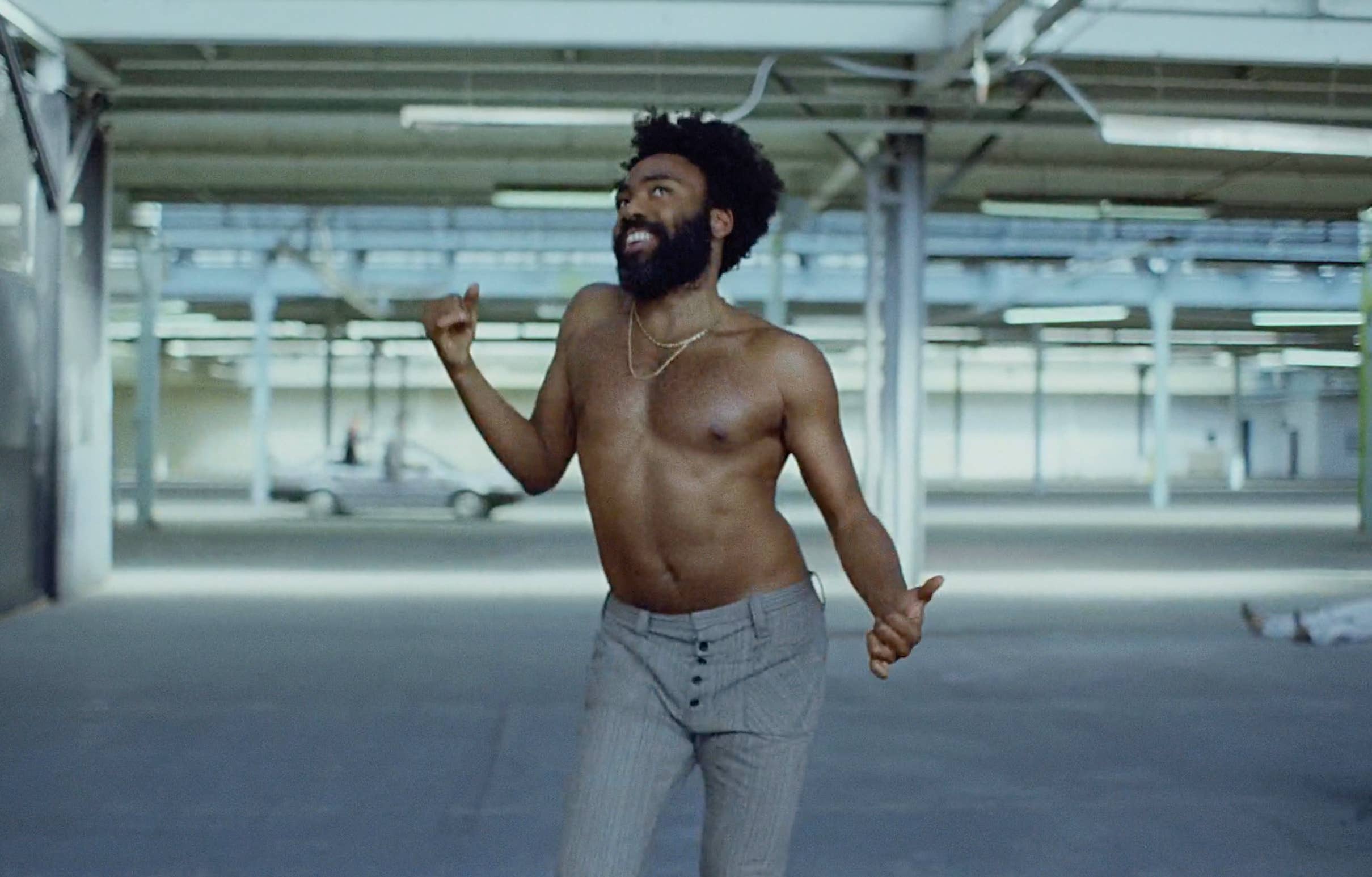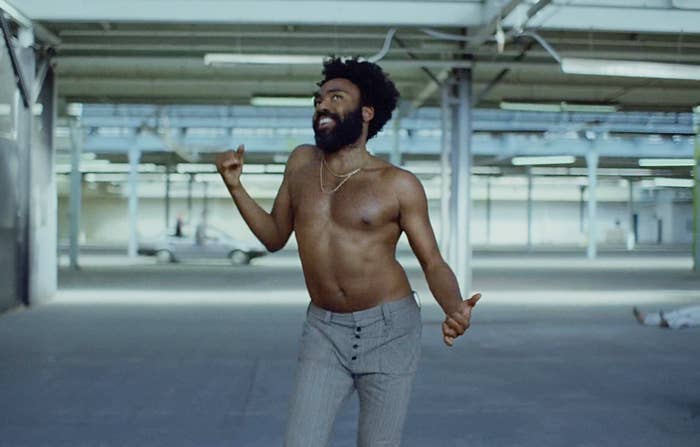
Childish Gambino's new music video for "This Is America" is full of symbolism. It's the kind of video that gets better each time you press play, as new layers and cultural references reveal themselves.
At the center of it all is the choreography of Sherrie Silver—a Rwandan-born dancer, creative director, actress, and philanthropist. After her popular dance videos were passed around Donald Glover's team, they brought her in to provide contrast and add a sense of light to the video's heavy political themes. "There are a lot of dark themes in it, so they wanted us to be the light of the video," Silver says. "You know how kids are innocent and kind of unaware of what's going on? We were there to smile and bring joy to everyone watching it, because the background is bringing so much darkness and reality."
Silver says her goal is to "take Afro dance and Afro culture to the world and then take the world to Africa," and this video gave her the platform to achieve that. Plus, the concept fit perfectly with her own background. "Dance is everything to us," she explains. "No matter how much is going on—even if it's the middle of a war or poverty or hunger—one thing Africans share is we dance our sorrows away. Not even professionally, it's just a part of our culture.
Incorporating moves that range from South Africa's Gwara Gwara dance to BlocBoy JB's shoot dance, the video is full of symbolic references from all over the world. "The whole point is to get a discussion going and to get people coming up with their own opinions," Silver notes. "We tried to show what's actually happening in the world. Not just in America, but in the world. We also wanted to bring joy to it, in the middle of madness. That's what kids do and that's what dance does—especially African dance."
Continue for our full conversation with Sherrie Silver and learn more about the meaning behind her choreography.
How did you get started with dance and choreography?
This is going to sound funny, but I used to write songs for my country and one day I was given the opportunity to perform for the president of Rwanda. Then they recommended me for a film role, so I went into acting. I did a movie and a few other things, before going to university. At that point, I had to decide if I was going to continue acting or finish and graduate. I decided to stay in school, but I thought, 'What else could I do while I'm here?' So I was like, 'I can kind of dance, I guess.' Instead of just doing what everyone else was doing, I wanted to embrace my culture, which I love so much.
if anyone is working with me or they're supporting my work, they're also supporting the actual African community and the development of the continent and its people.
It looks like you have big goals that extend beyond dance. On your website, you say “I'm on a mission to educate the world about African culture." How does dance help you achieve those goals?
My little slogan is that I take Afro dance and Afro culture to the world and then take the world to Africa. So I do that with the dance videos. Even what just happened now with Donald, our moves are on a world platform, and it opens all these doors. One of the main moves is a South African move. People want to know more about South Africa. People want to know more about our culture.
Then I go back to places like Rwanda, Nigeria, or Uganda and I'll open up these projects. I'll help set up businesses for people. I opened a vocational training center for ex-drug addicts and sex workers. I've helped redeveloped schools. My most recent and biggest project at the moment is I'm on a mission to take homeless kids off the street, so I opened a home for homeless children in Rwanda. Then next week I'm going back to celebrate by having a party with homeless, underprivileged, and disabled children in the capital city. Basically, if anyone is working with me or they're supporting my work, they're also supporting the actual African community and the development of the continent and its people.
How did you get connected with Donald Glover and his team for “This Is America?”
I believe it was because of one of the little nieces or cousins of someone on his management team. Apparently she was, like, obsessed with me and she used to watch my videos. She showed the videos to one of them, and when the project came up, they thought I would be perfect to choreograph and portray the happiness that they needed with the happy African school children. Me, working with kids, it was just perfect. I knew exactly how to go about it, because I grew up out in Rwanda. Then I moved to England, but I went back again. So I know how we are in school. I know that dance is everything to us. No matter how much is going on—even if it's the middle of a war or poverty or hunger—one thing Africans share is we dance our sorrows away. Not even professionally, it's just a part of our culture.
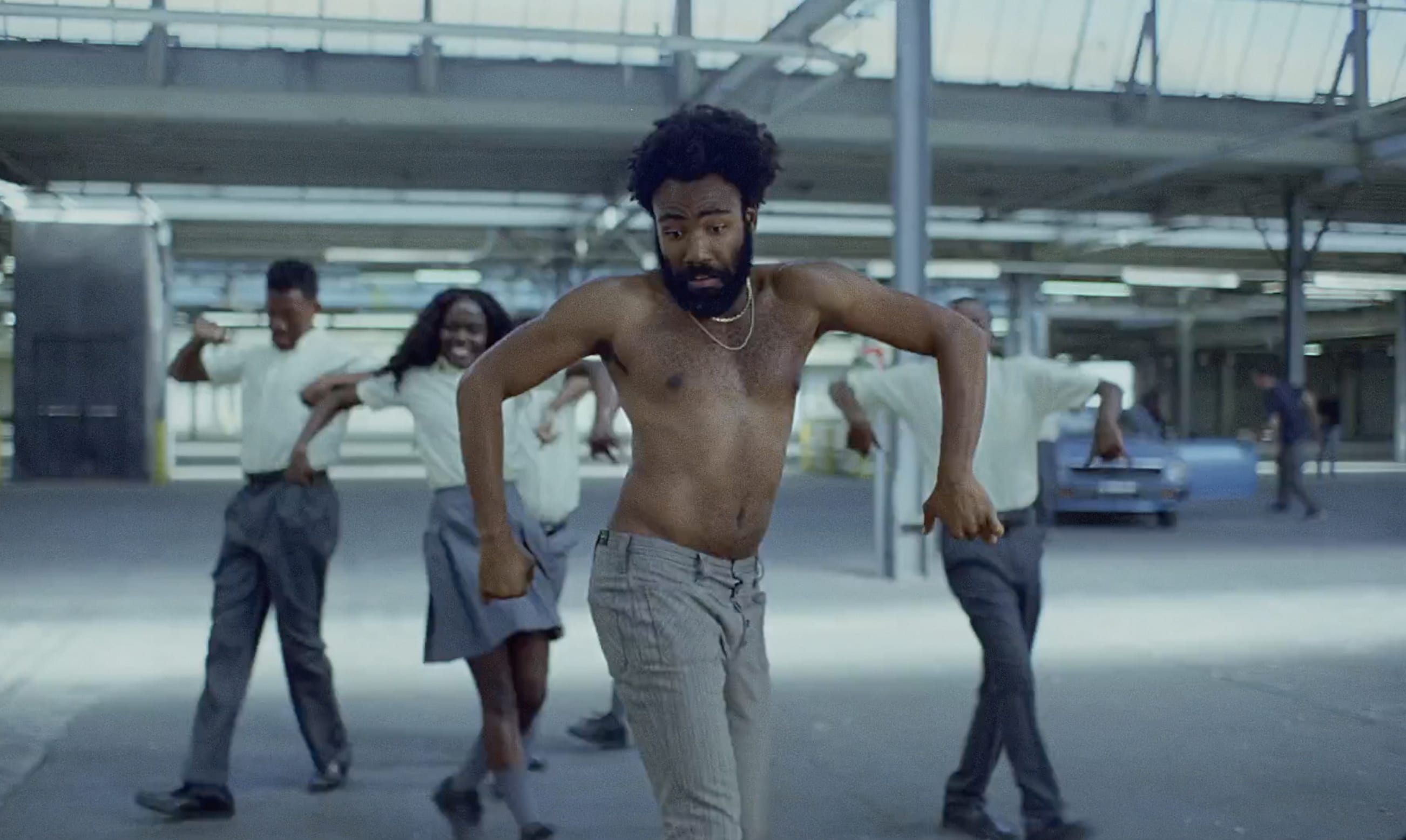
Do you remember the initial direction that Donald Glover's team gave you?
There are a lot of dark themes in it, so they wanted us to be the light of the video. You know how kids are innocent and kind of unaware of what's going on? We were there to smile and bring joy to everyone watching it, because the background is bringing so much darkness and reality. I've seen a lot of people online referring to us as "the distraction," which I find quite interesting. That's why I loved being a part of this particular project, because a lot of people comment, "Completely ignore the dancers and Donald and watch what's in the background." You know, there are two completely different worlds in one scene. Or, three different worlds actually. It's amazing.
Yeah, fans have already been drawing all kinds of conclusions. I even saw theories about Clockwork Orange references. What has it been like seeing people interpret the video and choreography in so many different ways already?
That's the whole point. The whole point is to get a discussion going and to get people coming up with their own opinions. Even with me being a part of the creative team, when I was watching the end of the video where Donald was running, I still don't know what he's running from. This is his vision. I was there to help put it together and add the dance elements, but Donald is the one who knows all the storyline—if there is a storyline. But what I do know is that we're trying to show what's actually happening in the world. Not just in America, but in the world. We also wanted to bring joy to it, in the middle of madness. That's what kids do and that's what dance does—especially African dance.
I was just happy to choreograph something from my heart that would portray Donald's vision.
How collaborative was the whole process?
Working with Donald was great, because he knew exactly what he wanted. He would let me know what he wants and I would come up with something, then we'd do the rehearsals. Obviously the video isn't very straightforward. It's a very difficult concept to understand. So Donald, the director Hiro Murai, and I had to work very closely together.
You know, everything is quite loose and it didn't have to be too choreographed. You know how in a lot of music videos, the dancing is super serious? In this case, everything is really loose. It's almost a bit funny. And Donald knew exactly what he wanted. I was just happy to choreograph something from my heart that would portray Donald's vision.
Donald Glover is known for having a lot of different talents, but he’s not a professional dancer. What was it like working with him as a choreographer?
It was actually great. They're not easy moves. They might look simple in the video, but there's a lot of technicality to them. A lot of these moves come from the heart. One thing I noticed was he was so dedicated to making sure he got it right. He got videos of the dances, went home and watched them, then literally came back the next day with the dances down. I remember seeing him rehearsing the hardest move. It was amazing. He was very, very dedicated. I'm just so happy with the final product and his style of movement, because I know that no one has seen him dance in that particular way before. He has his own twist.
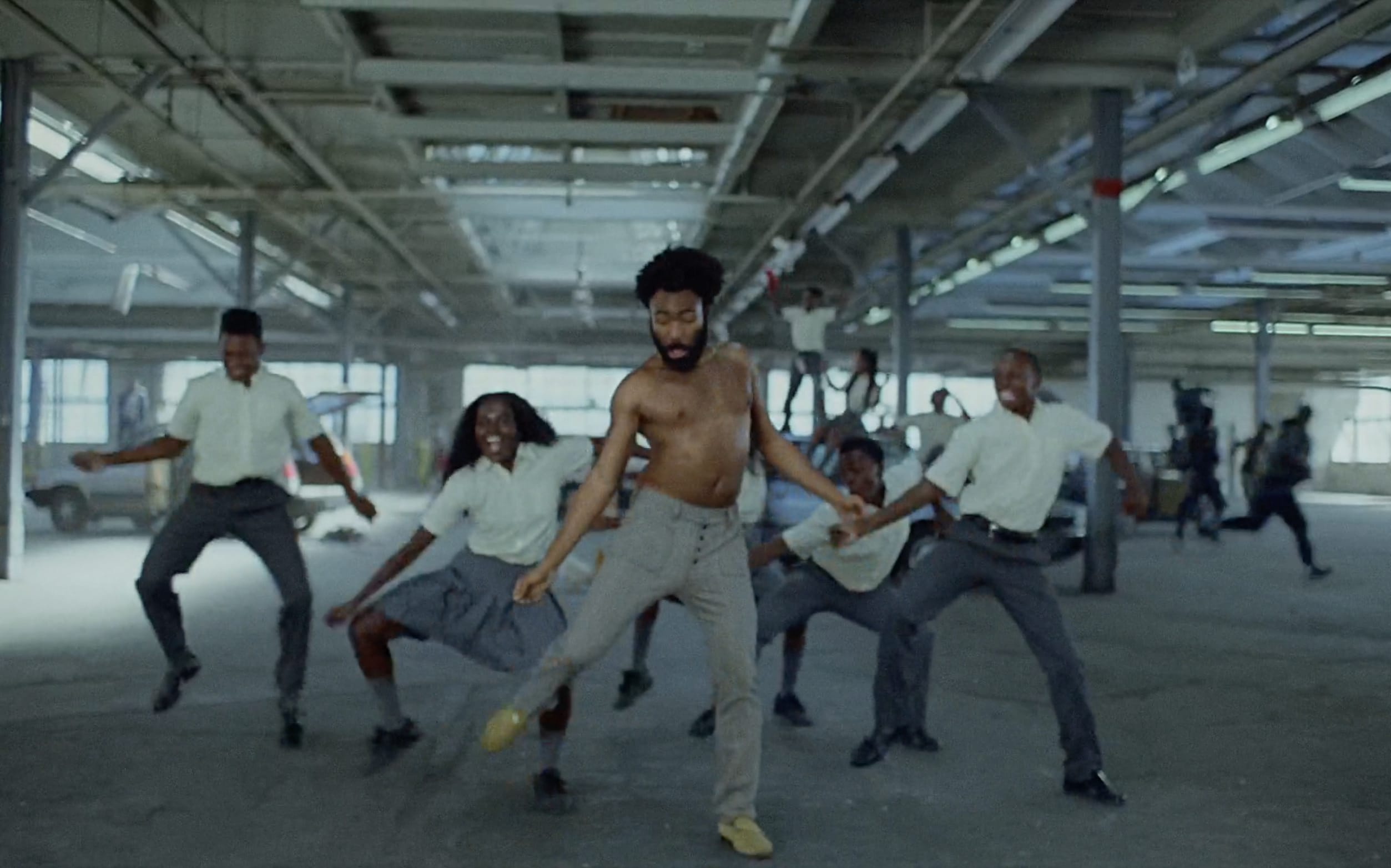
You mentioned earlier that one of the dances was a South African dance. Was that the Gwara Gwara dance?
Yeah, that was one of the main ones. The one guideline he gave me was the Gwara Gwara dance. He really likes that dance. It's the trending dance right now as well. So I had to make sure I got all the dances and did them properly, because I knew everyone would be watching this and I had to get it right.
One of my favorite things about this video is that it combines dances from all over. There are African dances right next to the shoot dance, the Nae Nae and all these other recognizable dances.
Yeah, there was the shoot dance, and I think I put a reverse in there and a small Nae Nae in the SNL performance. This is an unfamiliar style that people are still catching up with, so I wanted to add something a bit relatable, so you can recognize something. Like, "Oh, look, they're doing the shoot, I can do that, too!" So now people have started doing a dance challenge, where they're trying something new, but they still have something that's a bit comfortable. Obviously the song is called "This Is America," so even though I'm contrasting it with African dance, I still wanted to include some American dance styles in there, too.
What were some other dances that you included?
There's the Shaku Shaku dance from Nigeria. That's another big dance right now. We had so many. We had a lot of dances from Angola. We had the Alkayida, which is from Ghana. There was a little bit of the Azonto in there as well, which is from Ghana. And a lot of them don't have names, too. I didn't want to put in moves just from Rwanda because I'm from there. I lived in South Africa for some months, I've been to Nigeria many times and have projects out there. Uganda, too. I wanted to include dances from different parts of Africa, so I could represent a lot of the continent.
There were over 100 people on set, but everyone just worked together to make sure the project came together beautifully.
Technically, this looks like it would be a difficult video to pull off. A lot of the shots are really long and there’s so much going on in the background with extra dancers and everything. Was that a challenge?
I think they brought together the best for this video. The director Hiro Murai is one of the best. The whole team was great. Having a great team of people who know exactly what they're doing just makes life easier. The extras were doing their job very well, the horse was being obedient... [Laughs]. It was actually a very smooth shoot. You would think it would be very chaotic. But you know, there's a scene where everything stops and Donald starts smoking. Even with that, that was literally how quiet it was. There were over 100 people on set, but everyone just worked together to make sure the project came together beautifully. We only shot it over two days.
Some of the more obvious symbols are the allusions to Jim Crow in the beginning and the church shooting. Where did those ideas come from?
Yeah, the pose that he used in the beginning that everyone is referring to with Jim Crow—that was Donald's idea. I was actually surprised when the video came out. I had seen it before, but I'm not sure if he did get the inspiration from Jim Crow or not. I don't know if he did or if it was a coincidence. Because for me, I just noticed, "Wow, you're shooting this guy really passionately." It was an amazing posture to shoot somebody, you know? So I'm not sure, that's a question for Donald.
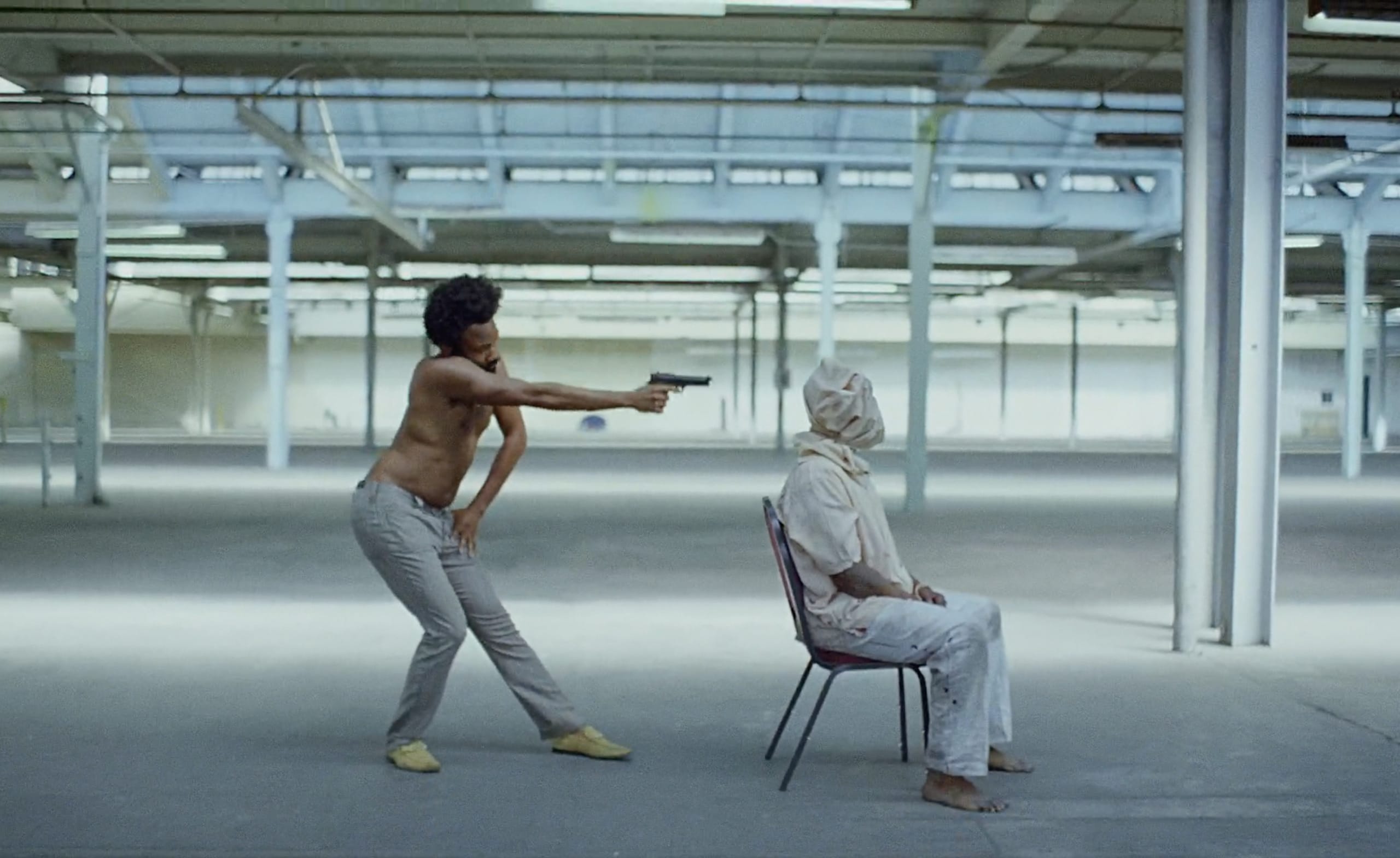
Do you usually try to work a lot of symbolism into your choreography?
Sometimes I definitely do. I think it's important to add elements that the audience can relate to, especially with history. I think it just makes you a better choreographer if you can reference or pay homage to historical figures.
The political themes and messages of this song could have been conveyed in a lot of different ways, visually. What about dance choreography, specifically, do you think suited the themes of this video so well?
I think the dance part of it really took the video to a different level. We're so used to seeing someone getting shot, someone making money, someone smoking—we're used to seeing all of that. But we wanted to show a light within all the political issues that are going on. And also the contrast of it being African kids in America at a time like this. We were almost misplaced and we were happy in the video. I think it's just beautiful. It's an amazing concept. I love it.
You make a cameo as a dancer in this, too, right?
Yeah, I'm in all the dance scenes with the dancers. So in the opening scene when he's walking forward, we come in and it's almost like he doesn't even know we're there. We're like his shadow. That was the word that was used. We're basically his shadow, but not doing exactly what he's doing—kind of mimicking him. Then we come back in again later. We're always kind of his shadow, so it gives people room to come up with a message from that as well. Like, why are these kids his shadow? There are so many conclusions that can be drawn from that.
we wanted to show a light within all the political issues that are going on.
What was your favorite part about the choreography in this video?
I really loved the bit where it says "Hunnid bands, hunnid bands, hunnid bands," and we were all going around him. It's a move from the Ivory Coast. It's a particular way of walking. How we deserted him, that was something I really wanted, just to add to the drama. When does your shadow ever desert you? It's almost like he noticed everyone was gone, then he goes back into his own world.
The conclusion that I’ve seen a lot of people draw is that Gambino’s dancing is meant to distract from all the craziness happening around him. Do you agree?
You could say "distract," but I say "contrast."
You called it "the light," earlier, which I thought was a good way of putting it.
Yeah, because no matter what, kids are always innocent. But what was interesting as well was that we didn't get hurt. We weren't affected by what was going on. But don't forget that one of the kids—the dancers—was actually the gun holder, as well.
You also did the choreography for the Saturday Night Live performance. How'd you approach that?
I wanted to have the same approach as the video with divided worlds. That's why we had Donald and the kids on two different sides and then they finally came together as one—which is similar as the video. He wasn't moving a lot, but the kids were really hyper, so there was less dancing for him on SNL. But the most important thing was the lights and having that climax with the lights. That was the joyful moment. With SNL, we added the money circle where the kids were dancing and throwing money. In America, that's normally perceived quite negatively and associated with strip clubs and things like that. But this means a lot to me because it's about African culture, and for us, throwing money is actually a sign of appreciation. It's a part of the culture.
I think this is the first time that African dance has actually been featured on SNL, so that's huge for the community.
Do you have any last thoughts about what this whole experience was like?
I'm just honored to have worked with such an amazing team. I'm happy to get African dance on a platform like this. I think this is the first time that African dance has actually been featured on SNL, so that's huge for the community.
You mentioned some of your charitable work at the beginning of our conversation. If people want to get involved or learn more about that, where should they go?
They can either go to me website which is sherriesilver.com, or they can go to me other site which is wallrebuilders.org. Right now, actually, I'm saving up to buy the land where I've opened up the home for the homeless children, so we can make that a permanent situation.
